**This chart analysis is for educational purposes only, and should not
be construed as a recommendation to buy, sell or sell-short said securities**
Stocks edged lower with relatively mild selling pressure. The S&P 500 ETF (SPY) fell .26% and the Nasdaq 100 ETF (QQQ) lost .34% on the day. Small-caps and mid-caps held up the best with the Russell 2000 ETF (IWM) falling just .19% and the S&P Midcap SPDR (MDY) edging higher. Eight sectors fell and two rose. The Finance SPDR (XLF) and the Energy SPDR (XLE) got oversold bounces after rather sharp declines the prior four days. The little pullback is entering its moment-of-truth. SPY is down five days straight and nearing support, while IWM held up quite well with losses on three of the last five days. I will be watching IWM for clues. Currently, IWM shows relative strength and this is positive for the market. A breakdown in IWM would be short-term bearish and suggest expanded selling pressure. Treasuries remain the wild card here. Continued strength in Treasuries could weigh on stocks and trigger a support break in IWM.
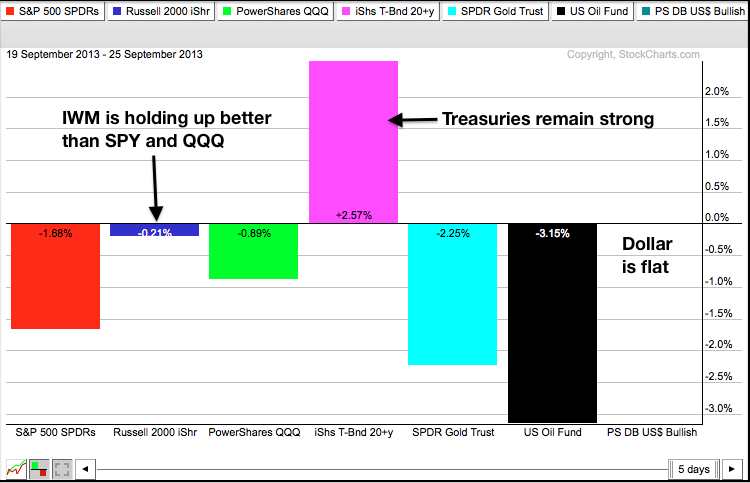
be construed as a recommendation to buy, sell or sell-short said securities**
Stocks edged lower with relatively mild selling pressure. The S&P 500 ETF (SPY) fell .26% and the Nasdaq 100 ETF (QQQ) lost .34% on the day. Small-caps and mid-caps held up the best with the Russell 2000 ETF (IWM) falling just .19% and the S&P Midcap SPDR (MDY) edging higher. Eight sectors fell and two rose. The Finance SPDR (XLF) and the Energy SPDR (XLE) got oversold bounces after rather sharp declines the prior four days. The little pullback is entering its moment-of-truth. SPY is down five days straight and nearing support, while IWM held up quite well with losses on three of the last five days. I will be watching IWM for clues. Currently, IWM shows relative strength and this is positive for the market. A breakdown in IWM would be short-term bearish and suggest expanded selling pressure. Treasuries remain the wild card here. Continued strength in Treasuries could weigh on stocks and trigger a support break in IWM.

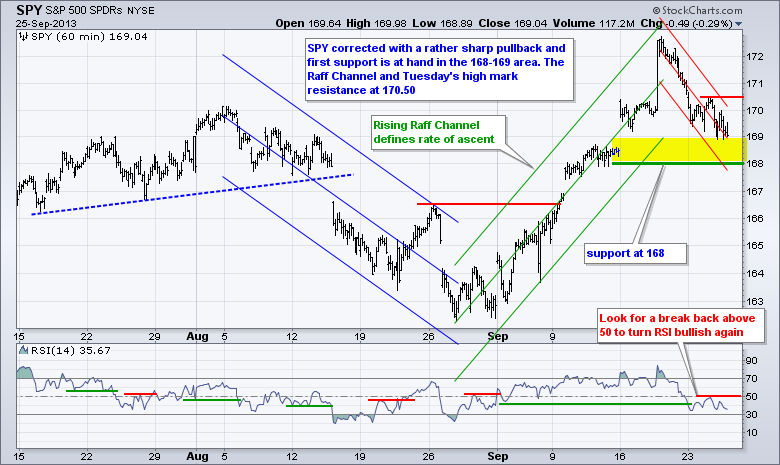
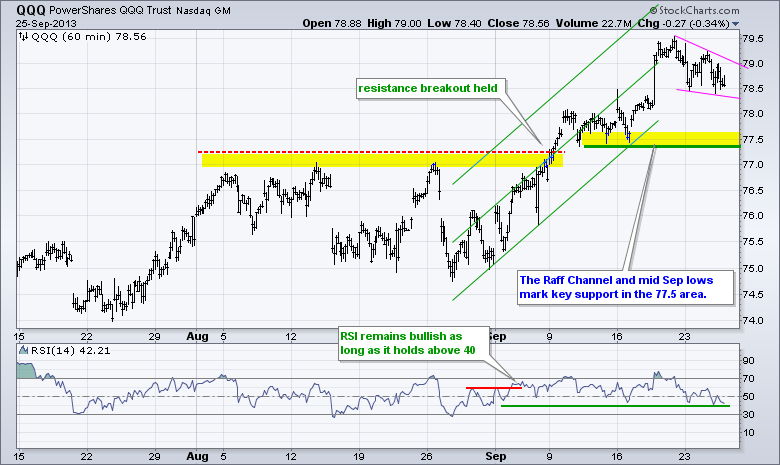
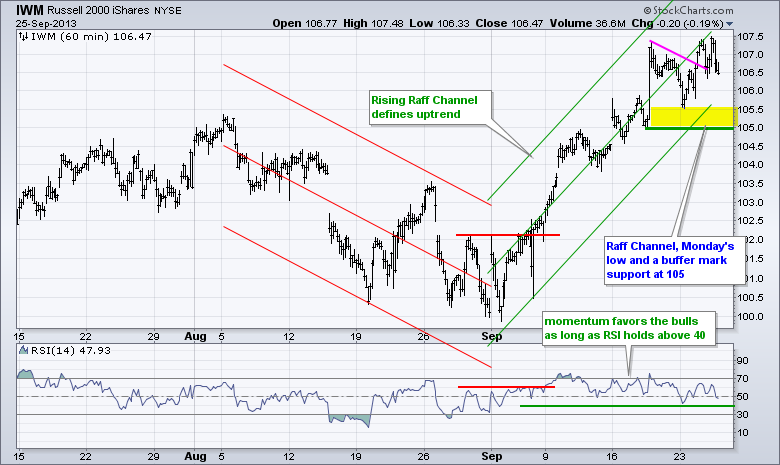
**************************************************************************
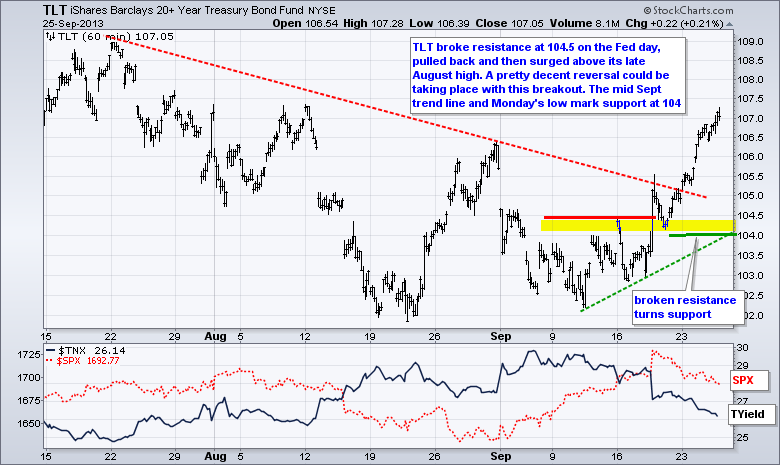
**************************************************************************
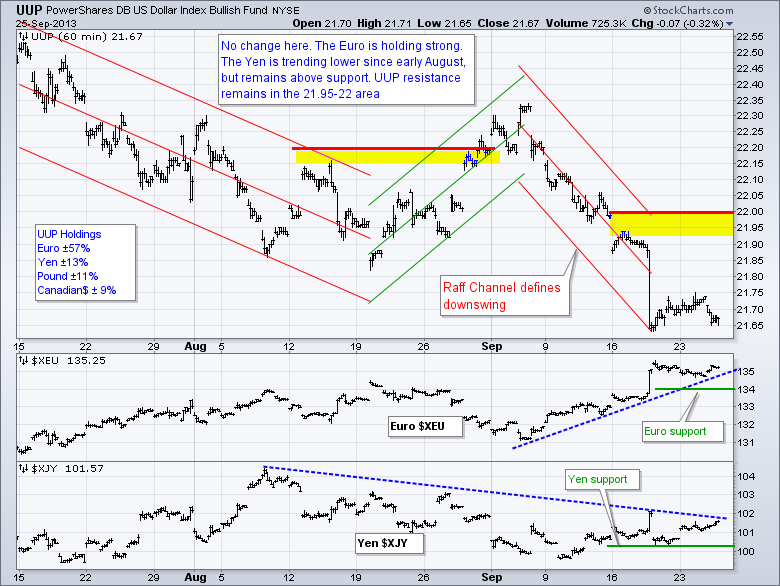
**************************************************************************

**************************************************************************
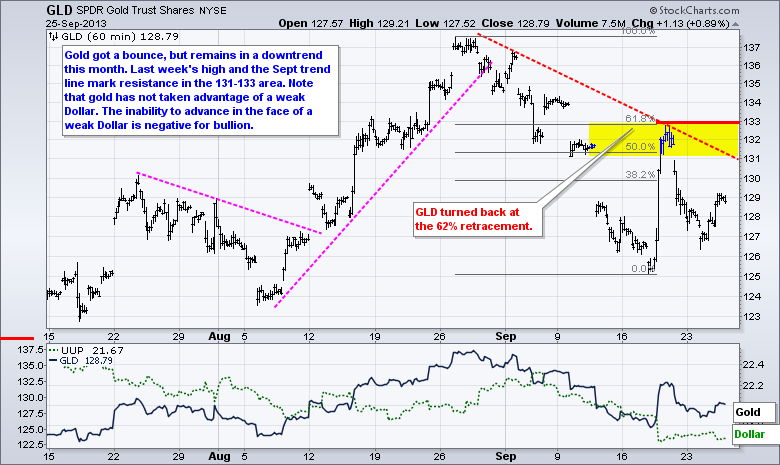
**************************************************************************
Key Reports and Events (all times Eastern):
Thu - Sep 26 - 08:30 - Initial Jobless Claims
Thu - Sep 26 - 08:30 - GDP
Thu - Sep 26 - 10:00 - Pending Home Sales
Thu - Sep 26 - 10:30 - Natural Gas Inventories
Fri - Sep 27 - 08:30 - Personal & Spending
Fri - Sep 27 - 09:55 - Michigan Sentiment
Mon – Sep 30 - 23:59 – Debt Ceiling Deadline
Charts of Interest: Tuesday and Thursday
This commentary and charts-of-interest are designed to stimulate thinking. This analysis is
not a recommendation to buy, sell, hold or sell short any security (stock ETF or otherwise).
We all need to think for ourselves when it comes to trading our own accounts. First, it is
the only way to really learn. Second, we are the only ones responsible for our decisions.
Think of these charts as food for further analysis. Before making a trade, it is important
to have a plan. Plan the trade and trade the plan. Among other things, this includes setting
a trigger level, a target area and a stop-loss level. It is also important to plan for three
possible price movements: advance, decline or sideways. Have a plan for all three scenarios
BEFORE making the trade. Consider possible holding times. And finally, look at overall market
conditions and sector/industry performance.

About the author:
Arthur Hill, CMT, is the Chief Technical Strategist at TrendInvestorPro.com. Focusing predominantly on US equities and ETFs, his systematic approach of identifying trend, finding signals within the trend, and setting key price levels has made him an esteemed market technician. Arthur has written articles for numerous financial publications including Barrons and Stocks & Commodities Magazine. In addition to his Chartered Market Technician (CMT) designation, he holds an MBA from the Cass Business School at City University in London.
Learn More





